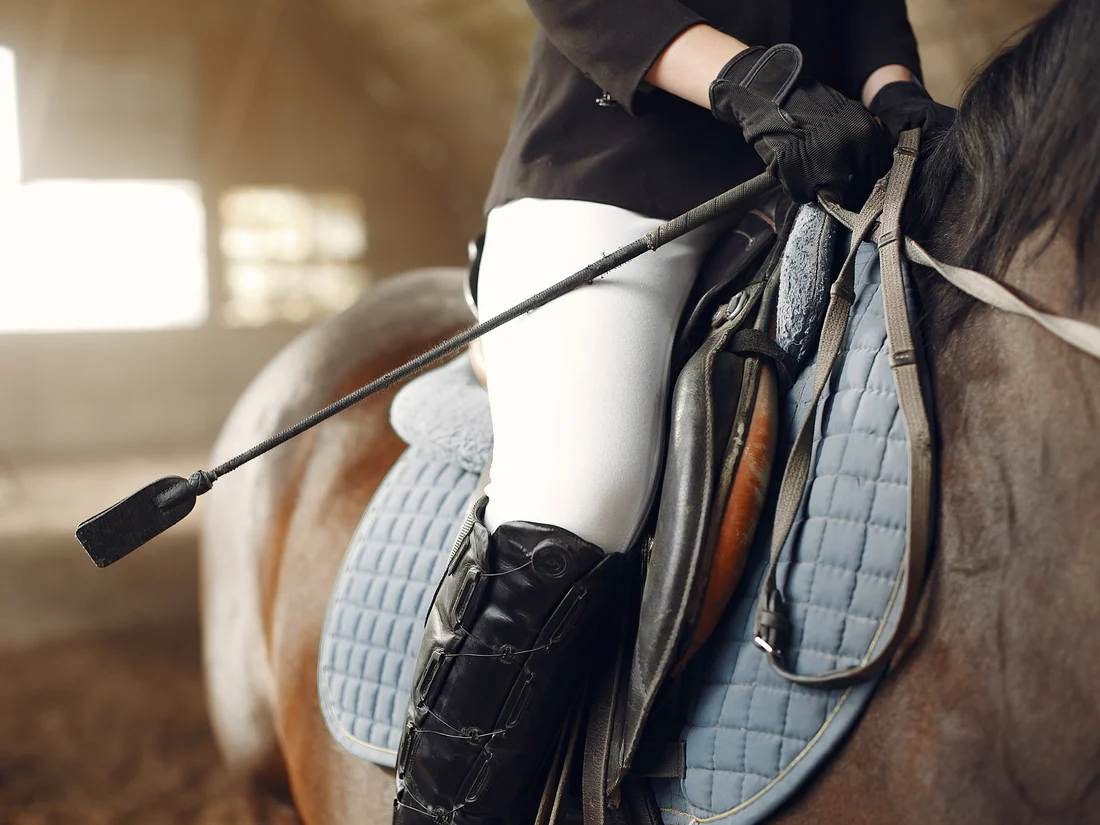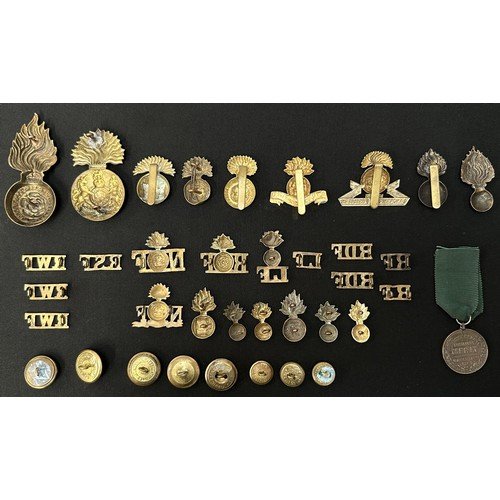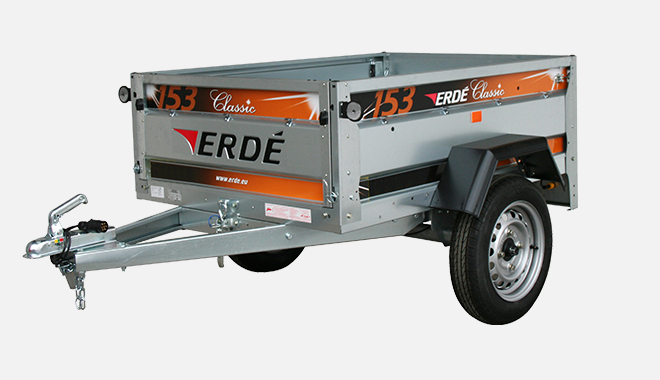When people think of horseback riding, they often picture saddles, reins, and helmets.However, many riders carry a tiny but crucial tool in their hands.—the riding crop. This piece of equipment isn’t just a stick with a flap; it’s a carefully designed aid that helps riders communicate with their horses. Understanding its history, purpose, types, and ethical use can give you a deeper appreciation for how humans and horses work together.
What Is a Riding Crop?
A riding crop is a short and bendable instrument utilized in horseback riding to provide distinct cues to a horse.Unlike whips or long dressage sticks, crops are compact—typically 24 to 30 inches long—and designed to reinforce a rider’s leg or voice cues.
It’s important to note that a riding crop is not meant to punish a horse. Instead, it acts as an extension of the rider’s arm, offering gentle reinforcement when a horse hesitates or ignores a command. The crop is made up of a handle, a shaft, and a leather keeper (the flat end). Some also include a wrist loop for better control.
The History of Riding Crops
The history of riding crops goes back many thousands of years.Early riders and hunters carried short sticks or branches to guide their animals. As horsemanship evolved, so did the tools. During the Middle Ages, riding equipment was made from wood and leather, leading to the creation of crops as essential elements of riding gear.
In hunting traditions, especially in England, carrying a crop became a status symbol. Later, in horse racing and equestrian sports, crops were standardized and regulated for safety and fairness. Today, they remain a common sight in disciplines like show jumping, dressage, and racing—though their use is often debated for ethical reasons.
Anatomy of a Riding Crop
A crop may look simple, but every part serves a purpose:
- Handle – Provides grip and control, often wrapped in rubber, leather, or synthetic material.
- Shaft – The flexible core made of fiberglass, carbon fiber, or covered in leather.
- Keeper (Flapper) – The broad end that makes contact, designed to make a sound without causing harm.
- Wrist Loop – Prevents dropping during fast rides.
Types of Riding Crops
Not all riding crops are the same. Different disciplines use slightly different tools.
Traditional Leather Riding Crops
Classic design with a leather keeper, used for everyday riding and training.
Jumping Bats
Shorter than standard crops (around 18–20 inches) and often used in show jumping. Their compact design prevents interference when riders lean forward.
Dressage Whips vs. Crops
While often confused, a dressage whip is longer (up to 43 inches) and allows riders to cue horses without removing their hands from the reins.In comparison, a crop is more compact and ideal for fast support.
Training Crops for Beginners
Lightweight, flexible, and designed to be forgiving, these are ideal for new riders learning timing and technique.
How to Use a Riding Crop Properly
Using a crop correctly requires skill and responsibility. A well-timed touch can help a horse understand, but misuse can cause fear or resistance.
Best practices include:
- Always start with leg or voice cues before using the crop.
- Apply light taps, never harsh strikes.
- Keep timing precise—cue immediately when a horse hesitates.
- Avoid hitting sensitive areas like the face or flank.
Common mistakes to avoid:
- Overusing the crop as a substitute for proper riding.
- Striking too hard or out of frustration.
- Using it inconsistently, which confuses the horse.
Riding Crop in Equestrian Sports
Crops appear in several competitive arenas:
- Dressage – Limited use for reinforcing precision cues.
- Show Jumping – Riders use jumping bats for encouragement over fences.
- Eventing – Crops help in cross-country riding, where horses need extra confidence.
- Horse Racing – Jockeys use whips and crops, though many countries now regulate their use heavily to protect animal welfare.
Riding Crop Safety and Ethics
One of the biggest debates in equestrian sports revolves around crops. Critics argue they can be misused, while defenders claim they’re essential communication tools when used humanely.
Ethical guidelines include:
- Never using crops out of anger.
- Following sport-specific regulations on the number of strikes.
- Prioritizing the horse’s comfort and trust.
For example, the British Horseracing Authority limits how many times a jockey can use the whip in a race to prevent overuse.
Choosing the Right Riding Crop
When shopping for a riding crop, you’ll want to consider your riding discipline, comfort, and horse’s needs.
| Crop Type | Length | Best For | Material |
| Traditional Crop | 24–30 in | General training | Leather, synthetic |
| Jumping Bat | 18–20 in | Show jumping | Fiberglass, leather |
| Dressage Whip | 36–43 in | Dressage, schooling | Carbon fiber, nylon |
| Beginner’s Crop | 22–26 in | Novice riders | Lightweight plastic |
Care and Maintenance of Riding Crops
Like saddles and bridles, crops need upkeep.
- Cleaning – Wipe down with a damp cloth; use leather conditioner if applicable.
- Storage – Keep in a cool, dry place; avoid bending or heavy stacking.
- Replacement – If the shaft cracks or the keeper wears out, replace it promptly to avoid accidents.
Modern Innovations in Riding Crops
Technology has even touched crops. Manufacturers now offer:
- Carbon fiber shafts – Lightweight yet durable.
- Ergonomic handles – For comfort during long rides.
- Vegan leather alternatives – Eco-friendly and cruelty-free options.
Riding Crops Beyond Horseback Riding
Interestingly, crops have crossed into other worlds:
- Fashion – Occasionally used as a symbol of authority in high fashion.
- Theater and Media – Props in films, stage plays, and performances.
- Pop Culture – Sometimes portrayed inaccurately, leading to misconceptions about their actual use.
Final Thoughts on Riding Crops
The riding crop may be small, but its role in equestrian life is significant. It’s a tool of communication, precision, and tradition. Used properly, it strengthens the bond between rider and horse, guiding rather than punishing. As equestrian sports evolve and regulations grow stricter, the future of riding crops will likely focus on balance, ethics, and innovation.
For riders of all levels, the key takeaway is simple: a riding crop is only as effective as the hands that hold it.














Leave a Reply